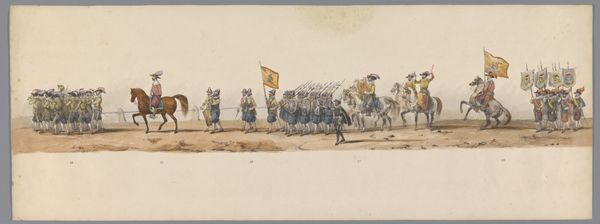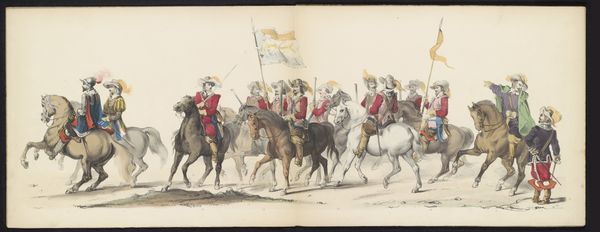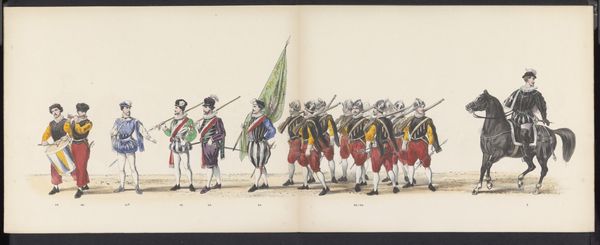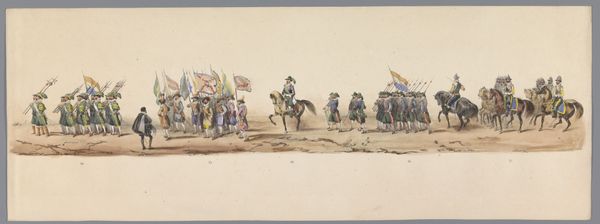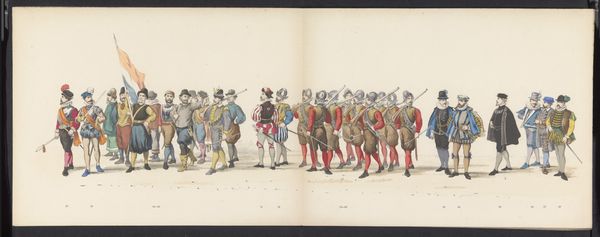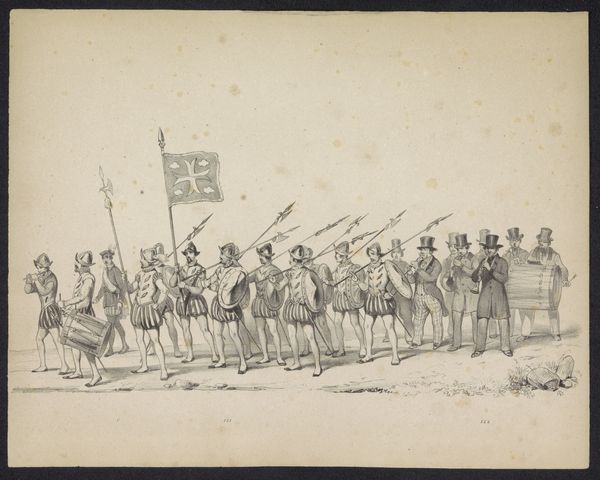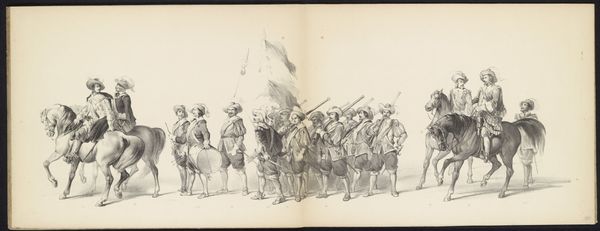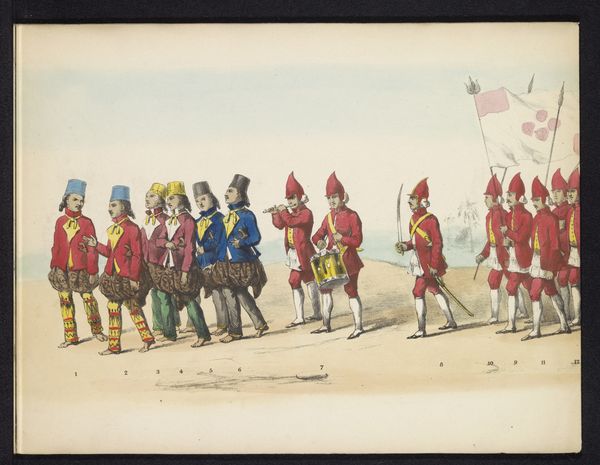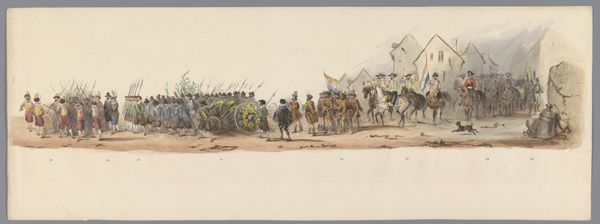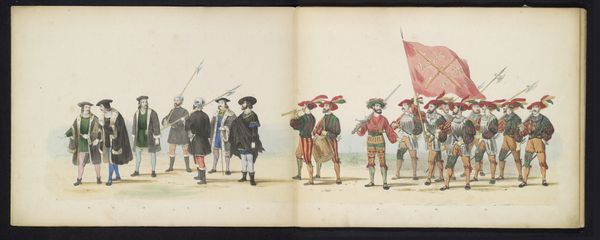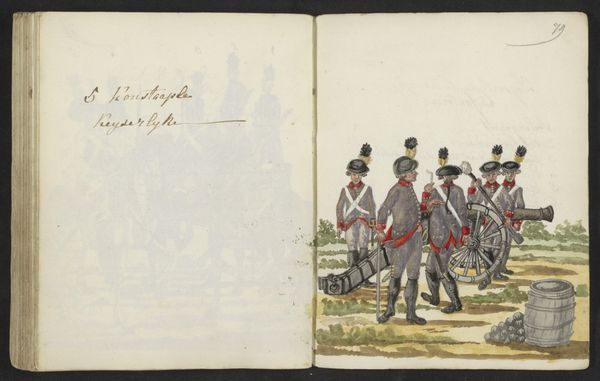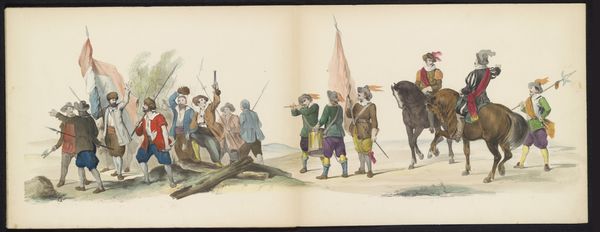
drawing, watercolor
#
drawing
#
watercolor
#
coloured pencil
#
romanticism
#
watercolour illustration
#
genre-painting
#
history-painting
#
mixed media
#
watercolor
Dimensions: height 285 mm, width 750 mm
Copyright: Rijks Museum: Open Domain
Curator: Carel Christiaan Antony Last, working in 1850, created this watercolor drawing titled "Maskerade van de Leidse studenten, 1850 (plaat 10)," which translates to "Masquerade of the Leiden Students." Editor: Right away, I’m struck by how festive yet somewhat somber the scene is. It's like a meticulously staged play—everyone's in costume, but there's an air of solemnity too, a slight remove. It's muted, pale colors almost give it the sense of an antique photo. Curator: The painting depicts a historical masquerade, likely referencing a specific event or era tied to Leiden University and perhaps broader Dutch history. We might think about how masquerades were a common way for privileged groups to engage in historical narratives, often reinforcing their social position and ideas about the past. How does the student element interact with 1850's historicism, a period in which thinking of "history" becomes newly powerful? Editor: I pick up on the idea of role-playing you mentioned, only, for me it is as if everyone is acutely aware they're in a costume—like, “Look at me pretending to be…!” Almost as if poking fun. Even in how stiff they're standing, but still enjoying the moment to peacock, parade even, especially with the horses and fancy weaponry, whatever is happening. Curator: That slightly unsettling effect is achieved in part by Last's commitment to precision and detail in depicting dress and facial expressions, drawing us into this almost self-conscious performance of history, and this tension plays into 19th century romanticism, emphasizing emotion while framing subjects with detailed backgrounds or environments. There are interesting tensions between that which is spontaneous, in contrast to that which is arranged or depicted "authentically". What is evoked? What is hidden? Editor: It’s intriguing to ponder that unease that emanates from this—it could very well be Last being hyper-aware and even making fun of that stiffness you're mentioning, almost like a quiet protest note on history. Thank you, I had so much fun looking through this lens at this. Curator: And, for me, seeing how a historical reenactment reveals how anxieties about social identity play out through time—in Last's present, but certainly still with us.
Comments
No comments
Be the first to comment and join the conversation on the ultimate creative platform.
